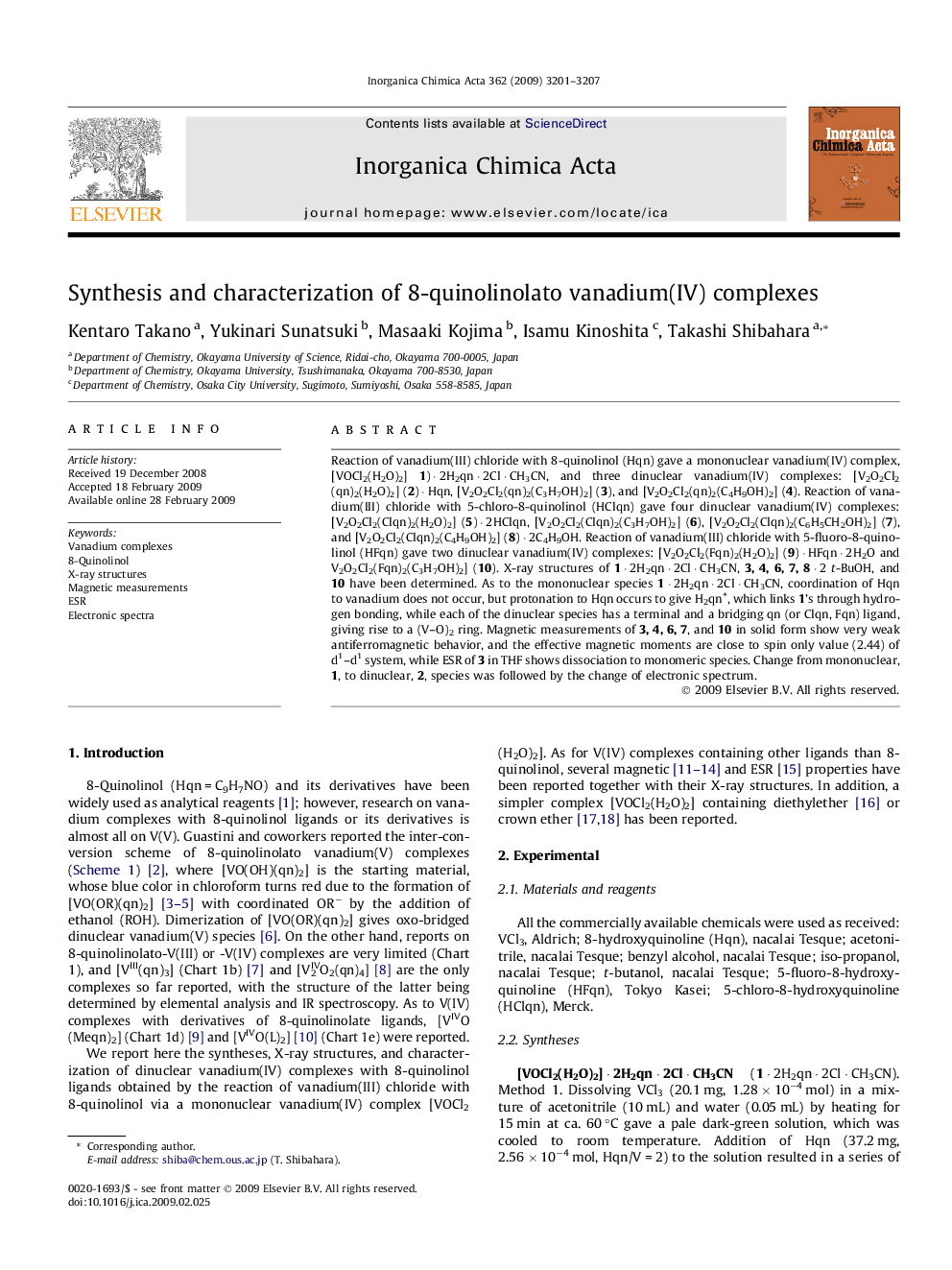| Article ID | Journal | Published Year | Pages | File Type |
|---|---|---|---|---|
| 1308499 | Inorganica Chimica Acta | 2009 | 7 Pages |
Reaction of vanadium(III) chloride with 8-quinolinol (Hqn) gave a mononuclear vanadium(IV) complex, [VOCl2(H2O)2] 1) · 2H2qn · 2Cl · CH3CN, and three dinuclear vanadium(IV) complexes: [V2O2Cl2(qn)2(H2O)2] (2) · Hqn, [V2O2Cl2(qn)2(C3H7OH)2] (3), and [V2O2Cl2(qn)2(C4H9OH)2] (4). Reaction of vanadium(III) chloride with 5-chloro-8-quinolinol (HClqn) gave four dinuclear vanadium(IV) complexes: [V2O2Cl2(Clqn)2(H2O)2] (5) · 2HClqn, [V2O2Cl2(Clqn)2(C3H7OH)2] (6), [V2O2Cl2(Clqn)2(C6H5CH2OH)2] (7), and [V2O2Cl2(Clqn)2(C4H9OH)2] (8) · 2C4H9OH. Reaction of vanadium(III) chloride with 5-fluoro-8-quinolinol (HFqn) gave two dinuclear vanadium(IV) complexes: [V2O2Cl2(Fqn)2(H2O)2] (9) · HFqn · 2H2O and V2O2Cl2(Fqn)2(C3H7OH)2] (10). X-ray structures of 1 · 2H2qn · 2Cl · CH3CN, 3, 4, 6, 7, 8 · 2 t-BuOH, and 10 have been determined. As to the mononuclear species 1 · 2H2qn · 2Cl · CH3CN, coordination of Hqn to vanadium does not occur, but protonation to Hqn occurs to give H2qn+, which links 1’s through hydrogen bonding, while each of the dinuclear species has a terminal and a bridging qn (or Clqn, Fqn) ligand, giving rise to a (V–O)2 ring. Magnetic measurements of 3, 4, 6, 7, and 10 in solid form show very weak antiferromagnetic behavior, and the effective magnetic moments are close to spin only value (2.44) of d1–d1 system, while ESR of 3 in THF shows dissociation to monomeric species. Change from mononuclear, 1, to dinuclear, 2, species was followed by the change of electronic spectrum.
Graphical abstractThe reaction of vanadium(III) chloride with 8-quinolinol afforded a dinuclear vanadium(IV) complex [V2O2Cl2(qn)2(R-OH)2] via a mononuclear vanadium(IV) complex [VOCl2(H2O)2].Figure optionsDownload full-size imageDownload as PowerPoint slide
